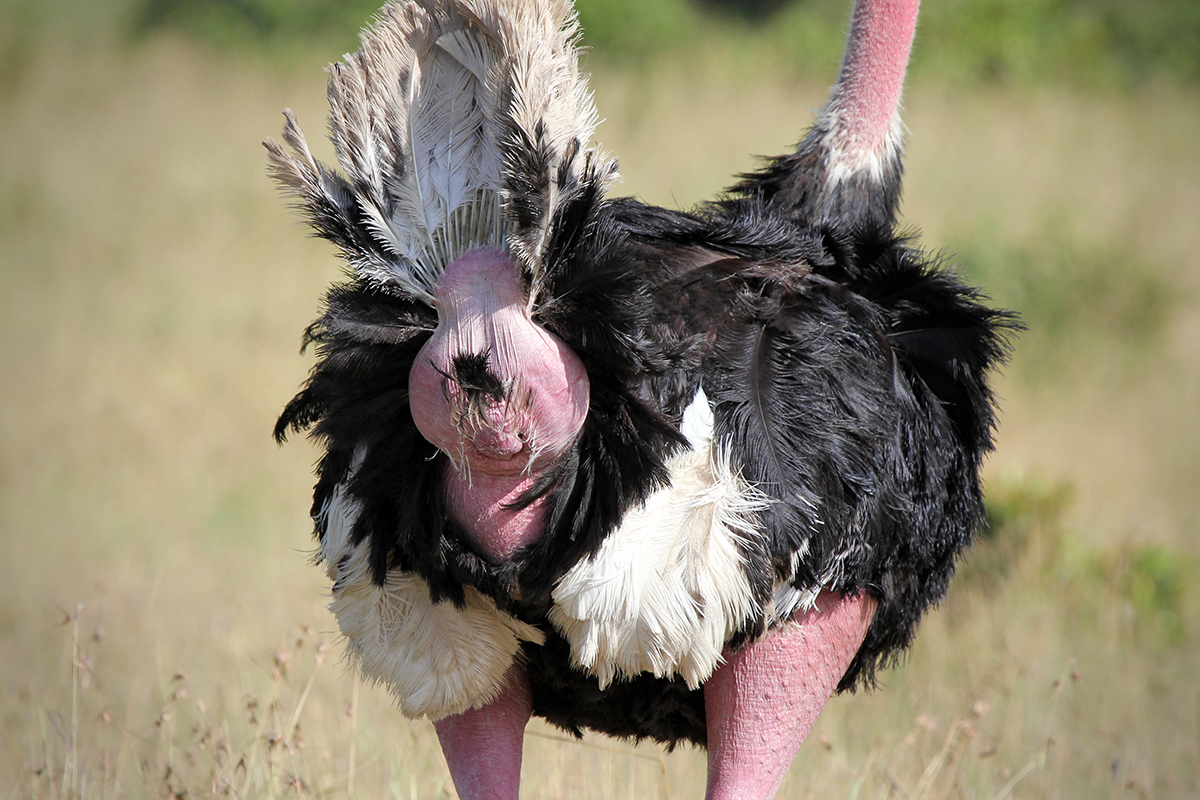The 10 Best Science Hashtags of 2017

For peeking into the daily life of working scientists, there's nothing like Twitter. Science Twitter is home to passionate debates, clever quips and many — so many — fantastic images and GIFs. In 2017, the science community on Twitter raised its profile with a steady stream of hashtags, many of which broke into the mainstream. Here are 10 of our favorites.
1. #ScienceMarch
The March for Science took place at hundreds of cities on April 22, 2017. On Twitter, it felt like it went on a lot longer than that. The march, a loosely organized event aimed at highlighting the importance of weighing scientific evidence when making public policy, was controversial from the get-go. Under the #ScienceMarch hashtag, scientists, science communicators and interested observers argued issues of diversity and inclusion, partisanship and messaging.
On the day of the march, which organizers say was attended by more than 1 million people worldwide (100,000 in Washington, D.C., alone), the #ScienceMarch hashtag turned into a gallery of clever and passionate protest signs, from "Science Not Silence" to "Make America Think Again." [10 Historically Significant Political Protests]
2. #BestCarcass
Science Twitter thrives when it gets to be gross. And, boy, does #BestCarcass do gross. This is the place to go if you want to see what it looks like when maggots get to work on an alligator carcass, or when a dolphin gets bitten in half by a shark. There are moments of surprising beauty, too, like an image of frogs frozen beneath an icy pond. And then there are things you kind of wish you could unsee, like a squirrel with most of its skull torn off. Mostly, this hashtag will just make you glad that Twitter doesn't come with a Smell-o-Vision feature.
3. #DoesItFart
Get the world’s most fascinating discoveries delivered straight to your inbox.
Speaking of smelly… The #DoesItFart hashtag had quite a run. When a doctoral candidate in biology was stumped by a question about whether snakes, er, pass gas, she tweeted the question to a snake expert. A third biologist saw the exchange and launched the hashtag, which then grew into an open-access spreadsheet and finally, a book: "Does It Fart? The Definitive Guide to Animal Flatulence" (Hatchette Books, 2018). You know there's someone on your Christmas list who wants it. (For the record, yes, snakes fart.) [10 Amazing Things You Didn't Know About Animals]
4. #ActualLivingScientist
Wildlife ecologist David Steen started the hashtag after reading that most Americans can't name a real living scientist. "So…Hi, I'm Dave," he tweeted. A follower, Mary Roblyer (@darthmom7) tweeted back the idea of scientists introducing themselves under the #ActualLivingScientist hashtag, and a juggernaut was born. Looking to meet a particle physicist or someone who studies foodborne pathogens? Want to follow someone who will fill your feed with bat facts or far-flung fieldwork? Months after this hashtag launched, scientists are still using it to introduce themselves and their work.
5. #SciArt
Visual learners will love the long-running and diverse hashtag #SciArt, where Twitter users post scientific illustrations, astounding astronomy photography, abstract art based on scientific concepts and laboratory experiments that just happen to look beautiful. Check out this beautiful vision of the cerebellum, the portion of the brain that helps coordinate movement. Or this dreamy way of looking at cave structures. The related hashtag #paleoart is a great place to see artists bringing ancient creatures to life.
6. #MyOneScienceTweet
You don't get much space on Twitter, and this hashtag cuts to the chase. #MyOneScienceTweet started in October when an entomology doctoral student in Missouri asked Science Twitter what they'd want the world to know about their field of study in a single sentence. The result was a flood of quirky facts and eye-opening myth-busting. The subjects spanned from the serious ("The world is warming. It's us. There's hope. It's us," from Kate Marvel) to the exasperated ("Medieval people didn't think the world was flat," tweeted Dale Kedwards, adding the additional hashtag #screamingintothevoid) to the humorous ("Holy crap there are a lot of bugs," wrote University of Texas at Austin entomologist Alex Wild).
7. #ScanAllFish
The #ScanAllFish hashtag never went properly viral like #ActualLivingScientist, but this hidden gem deserves all the attention it can get. Started in 2016, #ScanAllFish is where fish researchers deposit computed tomography (CT) scans of, well, all the fish they can. The hashtag was the brainchild of Adam Summers, a researcher at the University of Washington's Friday Harbor Laboratories. The idea? To scan all the fish — all 30,000+ of them! — and make the resulting images available. And those images? They're a real trip.
8. #PregnantInTheField
Over the summer, women in archaeology, geology and other professions that involve getting down in the dirt shared photos of themselves under #womendigging. From that arose an even more stereotype-busting hashtag from University of Georgia paleoecologist Suzanne Birch: #PregnantInTheField. Field-loving scientists shared photos and told stories of excavating archaeological sites and taking geological surveys while everything from a few weeks to many months pregnant. "Great thing about #pregnantinthefield is just talking about it – some sprightly into 3rd trimester, others much earlier. All ok," concluded archaeologist Becky Wragg Sykes.
9. #FieldworkFail
Sometimes science doesn't go as planned… especially when you're far from home. The hashtag #FieldworkFail highlighted those awkward moments, like when you go to the mangroves and come home to find a snail inside your bellybutton. Or when you go to bed and find that a snake is already there, eating a rat. Or when you glue yourself to a crocodile. Many of the highlights are collected in the book "Fieldwork Fail: The Messy Side of Science."
10. #SolarEclipse2017
The best part about the #SolarEclipse2017 hashtag? You didn't have to be a scientist to get in on the fun. On Aug. 21, 2017, the entire United States went temporarily wild for the sun as a total solar eclipse swept diagonally across the country. Everyone in the contiguous United States got at least a view of a partial eclipse. The #SolarEclipse2017 hashtag captured the entire experience, from gorgeous photographs of totality, to stern expert warnings about not staring directly at the sun, to selfies of people wearing dorky eclipse glasses. For a rare moment, all of Twitter was Science Twitter.
Original article on Live Science.

Stephanie Pappas is a contributing writer for Live Science, covering topics ranging from geoscience to archaeology to the human brain and behavior. She was previously a senior writer for Live Science but is now a freelancer based in Denver, Colorado, and regularly contributes to Scientific American and The Monitor, the monthly magazine of the American Psychological Association. Stephanie received a bachelor's degree in psychology from the University of South Carolina and a graduate certificate in science communication from the University of California, Santa Cruz.


